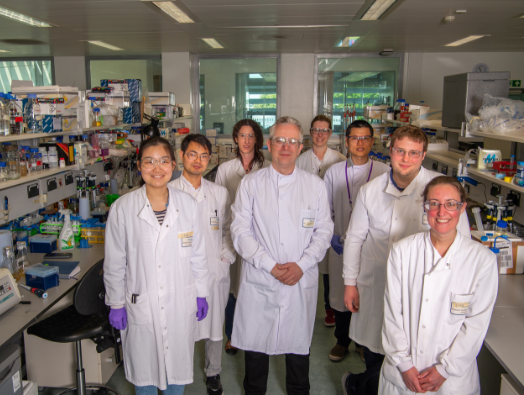
Rosalind Franklin Institute solves vital bacteria mystery, opening the door for next generation antibiotics
A team of researchers led by Professor James Naismith, newly appointed Director of the Harwell Campus based Rosalind Franklin Institute, have solved the structure of a vital bacterial protein, opening the door to the development of new drug compounds. This discovery could offer a new pathway for access to antibiotic treatments in a pathogen identified by the World Health Organisations as one of the most dangerous.
Increasing global antibiotic resistance has been identified as one of the most urgent problems in human health and the pathogen investigated, Acinetobacter baumannii , published this week in eLife (https://elifesciences.org/articles/42270), is a major cause of hospital acquired infection, causing multiple infections in immunocompromised patients.
The team solved the structure of the protein BauA, a receptor which allows the bacteria to absorb iron from their environment. This iron uptake pathway has long been identified as a good target for antibiotics – using the cell’s own machinery to smuggle toxic compounds into the bacteria where they can take effect. Unfortunately, without the structure of the BauA receptor, it was not possible to understand which one out of two possible versions of the secreted protein was being taken up, so the pathway could not be used to design new drug treatments.
By solving the structure of the receptor, this doorway into the bacterium has now been opened, and the team hope that new drug compounds will shortly follow. These new treatments will mimic the shape of the secreted protein, using the receptor to gain entry to the bacterial cell. Talking of the findings Jim said, “The next step for this project is to build new drugs using a process known as rational drug design – using the shape of a biological receptor to build molecules which fit perfectly. This approach is vital to generate new drugs against these bacteria, but also in drug design in a broader sense.
“We need new technologies and approaches, like the ones being developed by the Rosalind Franklin Institute, to bring together basic insights into biology with the complex computing, automation and chemistry needed to turn these findings into real medical treatments”.
This paper is the first to be published by the Rosalind Franklin Institute, which will work to develop new technologies to improve the imaging and analysis of biological samples from molecules to cells and tissues. These technologies will be used to transform our understanding of biology, ultimately improving human health.
The structure of the receptor in this work was solved using X-ray beamlines at Diamond Light Source, the UK’s national synchrotron. The synchrotron allows researchers and industry to understand the atomic structures of materials, including proteins, and will work closely with the Rosalind Franklin Institute to develop next generation technologies for life science imaging. Both Diamond and the Rosalind Franklin Institute sit at the heart of the Harwell’s HealthTec Cluster.